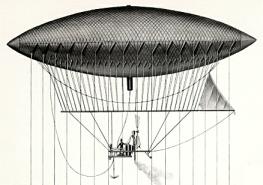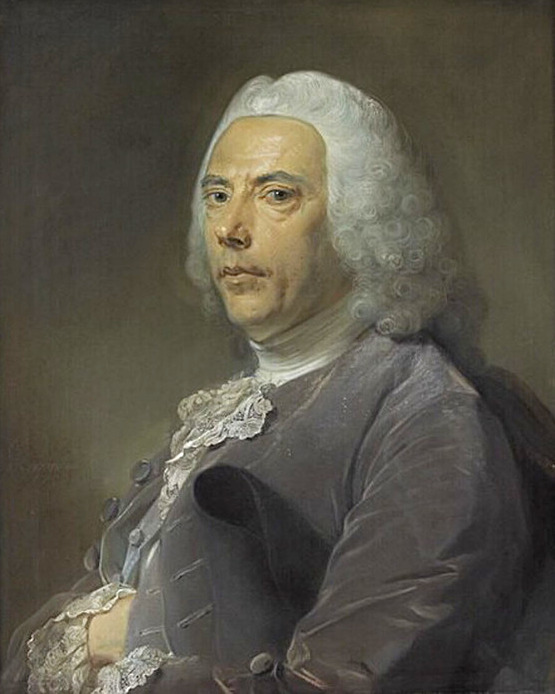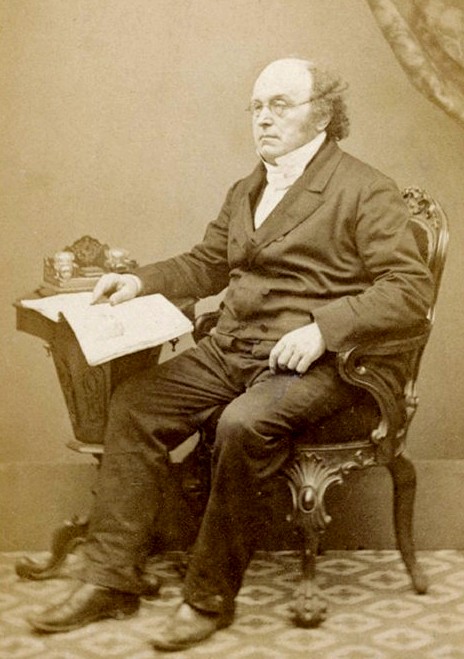|
1852 In Science
The year 1852 in science and technology involved some significant events, listed below. Aeronautics * September 24 – French engineer Henri Giffard makes the first airship trip, from Paris to Trappes. Astronomy * September 19 – Annibale de Gasparis discovers the asteroid 20 Massalia from the north dome of the Astronomical Observatory of Capodimonte in Naples. Biology * October 5 – American apiarist L. L. Langstroth patents the Langstroth hive for the cultivation of honey bees. * Last recognised sighting of a great auk, on the Grand Banks of Newfoundland. Chemistry * August Beer proposes Beer's law, which explains the relationship between the composition of a mixture and the amount of light it will absorb. Based partly on earlier work by Pierre Bouguer and Johann Heinrich Lambert, it establishes the analytical technique known as spectrophotometry. Mathematics * October 23 – Francis Guthrie poses the four colour problem to Augustus De Morgan. Medicine * January 1 ... [...More Info...] [...Related Items...] OR: [Wikipedia] [Google] [Baidu] |
Pierre Bouguer
Pierre Bouguer () (16 February 1698, Le Croisic – 15 August 1758, Paris) was a French mathematician, geophysicist, geodesist, and astronomer. He is also known as "the father of naval architecture". Career Bouguer's father, Jean Bouguer, one of the best hydrographers of his time, was Regius Professor of hydrography at Le Croisic in lower Brittany, and author of a treatise on navigation. He taught his sons Pierre and Jan at their home, where he also taught private students. In 1714, at the age of 16, Pierre was appointed to succeed his deceased father as professor of hydrography. In 1727 he gained the prize given by the French Academy of Sciences for his paper ''On the masting of ships'', beating Leonhard Euler; and two other prizes, one for his dissertation ''On the best method of observing the altitude of stars at sea'', the other for his paper ''On the best method of observing the variation of the compass at sea''. These were published in the Prix de l'Académie des Sci ... [...More Info...] [...Related Items...] OR: [Wikipedia] [Google] [Baidu] |
George Jennings
George Jennings (10 November 1810 – 17 April 1882) was an English sanitary engineer and plumber who invented the first public flush toilets. These were first showcased at the Great Exhibition in 1851, and such was the popularity of his invention the first public toilets opened in 1852 and were known as ‘Public Waiting Rooms'. Josiah George Jennings was born on 10 November 1810 in Eling, at the edge of the New Forest in Hampshire. He was the eldest of seven children of Jonas Joseph Jennings and Mary Dimmock. He was educated at the local school run by his uncle-in-law Joshua Withers. At 14, after his father's death he was apprenticed to his grandfather's glass and lead merchandising business, before moving to his uncle John Jennings's plumbing business at Southwick, Southampton. In 1831 he became a plumber with Messrs. Lancelot Burton of Newcastle Street, London where his father had been a foreman before him. He married twice, having four children by his first wife, Mary Ann ... [...More Info...] [...Related Items...] OR: [Wikipedia] [Google] [Baidu] |
Alexander Bonner Latta
Alexander () is a male name of Greek origin. The most prominent bearer of the name is Alexander the Great, the king of the Ancient Greek kingdom of Macedonia who created one of the largest empires in ancient history. Variants listed here are Aleksandar, Aleksander, Oleksandr, Oleksander, Aleksandr, and Alekzandr. Related names and diminutives include Iskandar, Alec, Alek, Alex, Alexsander, Alexandre, Aleks, Aleksa, Aleksandre, Alejandro, Alessandro, Alasdair, Sasha, Sandy, Sandro, Sikandar, Skander, Sander and Xander; feminine forms include Alexandra, Alexandria, and Sasha. Etymology The name ''Alexander'' originates from the (; 'defending men' or 'protector of men'). It is a compound of the verb (; 'to ward off, avert, defend') and the noun (, genitive: , ; meaning 'man'). The earliest attested form of the name, is the Mycenaean Greek feminine anthroponym , , (/Alexandra/), written in the Linear B syllabic script. Alaksandu, alternatively called ''Alakasandu'' or ... [...More Info...] [...Related Items...] OR: [Wikipedia] [Google] [Baidu] |
Fire Engine
A fire engine or fire truck (also spelled firetruck) is a vehicle, usually a specially designed or modified truck, that functions as a firefighting apparatus. The primary purposes of a fire engine include transporting firefighters and water to an incident as well as carrying equipment for firefighting operations in a fire drill. Some fire engines have specialized functions, such as wildfire suppression and aircraft rescue and firefighting, and may also carry equipment for technical rescue. Many fire engines are based on a commercial vehicle chassis that is further upgraded and customized for firefighting requirements. They are generally considered Emergency vehicle, emergency vehicles authorized to be Emergency vehicle equipment, equipped with Emergency vehicle lighting, emergency lights and Siren (alarm), sirens, as well as communication equipment such as two-way radios and mobile computer technology. The terms ''fire engine'' and ''fire truck'' are often used interchangeably ... [...More Info...] [...Related Items...] OR: [Wikipedia] [Google] [Baidu] |
Great Ormond Street Hospital
Great Ormond Street Hospital (informally GOSH, formerly the Hospital for Sick Children) is a children's hospital located in the Bloomsbury area of the London Borough of Camden, and a part of Great Ormond Street Hospital for Children NHS Foundation Trust. The hospital is the largest centre for child heart surgery in Britain and one of the largest centres for heart transplantation in the world. In 1962 it developed the first heart and lung bypass machine for children. With children's book author Roald Dahl, it developed an improved shunt valve for children with hydrocephalus, and non-invasive (percutaneous) heart valve replacements. Great Ormond Street performed the first UK clinical trials of the rubella vaccine, and the first bone marrow transplant and gene therapy for severe combined immunodeficiency.Breakthroughs The hospital is the largest centre for research and postgraduate teaching in children's health in Europe. In 1929, J. M. Barrie donated the copyright ... [...More Info...] [...Related Items...] OR: [Wikipedia] [Google] [Baidu] |
Mount Sinai Hospital, New York
Mount Sinai Hospital, founded in 1852, is one of the oldest and largest teaching hospitals in the United States. It is located in East Harlem in the New York City borough of Manhattan, on the eastern border of Central Park stretching along Madison and Fifth Avenues, between East 98th Street and East 103rd Street. The Mount Sinai Hospital is a tertiary and quaternary care facility and as such offers care in all medical and surgical specialties and subspecialties. The hospital is a AIDS center, Sexual Assault Forensic Examiner (SAFE) Program Hospital, Comprehensive Stroke Center, and Regional Perinatal Center. The maternity program is among the busiest in New York State with just over 7,000 deliveries per year. In March 2023, the hospital was ranked 23rd among over 2,300 hospitals in the world and the best hospital in New York state by ''Newsweek.'' Adjacent to the hospital is the Mount Sinai Kravis Children's Hospital which provides comprehensive pediatric specialties an ... [...More Info...] [...Related Items...] OR: [Wikipedia] [Google] [Baidu] |
Charitable Organization
A charitable organization or charity is an organization whose primary objectives are philanthropy and social well-being (e.g. educational, Religion, religious or other activities serving the public interest or common good). The legal definition of a charitable organization (and of charity) varies between countries and in some instances regions of the country. The Charity regulators, regulation, the tax treatment, and the way in which charity law affects charitable organizations also vary. Charitable organizations may not use any of their funds to profit individual persons or entities. However, some charitable organizations have come under scrutiny for spending a disproportionate amount of their income to pay the salaries of their leadership. Financial figures (e.g. tax refunds, revenue from fundraising, revenue from the sale of goods and services or revenue from investment, and funds held in reserve) are indicators to assess the financial sustainability of a charity, especiall ... [...More Info...] [...Related Items...] OR: [Wikipedia] [Google] [Baidu] |
Hebrew
Hebrew (; ''ʿÎbrit'') is a Northwest Semitic languages, Northwest Semitic language within the Afroasiatic languages, Afroasiatic language family. A regional dialect of the Canaanite languages, it was natively spoken by the Israelites and remained in regular use as a first language until after 200 CE and as the Sacred language, liturgical language of Judaism (since the Second Temple period) and Samaritanism. The language was Revival of the Hebrew language, revived as a spoken language in the 19th century, and is the only successful large-scale example of Language revitalization, linguistic revival. It is the only Canaanite language, as well as one of only two Northwest Semitic languages, with the other being Aramaic, still spoken today. The earliest examples of written Paleo-Hebrew alphabet, Paleo-Hebrew date back to the 10th century BCE. Nearly all of the Hebrew Bible is written in Biblical Hebrew, with much of its present form in the dialect that scholars believe flourish ... [...More Info...] [...Related Items...] OR: [Wikipedia] [Google] [Baidu] |
Augustus De Morgan
Augustus De Morgan (27 June 1806 – 18 March 1871) was a British mathematician and logician. He is best known for De Morgan's laws, relating logical conjunction, disjunction, and negation, and for coining the term "mathematical induction", the underlying principles of which he formalized. De Morgan's contributions to logic are heavily used in many branches of mathematics, including set theory and probability theory, as well as other related fields such as computer science. Biography Childhood Augustus De Morgan was born in Madurai, in the Carnatic Sultanate, Carnatic region of India, in 1806. His father was Lieutenant-Colonel John De Morgan (1772–1816), who held various appointments in the service of the East India Company, and his mother, Elizabeth (née Dodson, 1776–1856), was the granddaughter of James Dodson (mathematician), James Dodson, who computed a table of anti-logarithms (inverse logarithms). Augustus De Morgan became blind in one eye within a few months of his bi ... [...More Info...] [...Related Items...] OR: [Wikipedia] [Google] [Baidu] |
Four Colour Problem
In mathematics, the four color theorem, or the four color map theorem, states that no more than four colors are required to color the regions of any map so that no two adjacent regions have the same color. ''Adjacent'' means that two regions share a common boundary of non-zero length (i.e., not merely a corner where three or more regions meet). It was the first major theorem to be proved using a computer. Initially, this proof was not accepted by all mathematicians because the computer-assisted proof was infeasible for a human to check by hand. The proof has gained wide acceptance since then, although some doubts remain. The theorem is a stronger version of the five color theorem, which can be shown using a significantly simpler argument. Although the weaker five color theorem was proven already in the 1800s, the four color theorem resisted until 1976 when it was proven by Kenneth Appel and Wolfgang Haken in a computer-aided proof. This came after many false proofs and mistaken ... [...More Info...] [...Related Items...] OR: [Wikipedia] [Google] [Baidu] |
Francis Guthrie
Francis Guthrie (born 22 January 1831 in London; d. 19 October 1899 in Claremont, Cape Town) was a Cape Colony mathematician and botanist who first posed the Four Colour Problem in 1852. He studied mathematics under Augustus De Morgan, and botany under John Lindley at University College London. Guthrie obtained his B.A. in 1850, and LL.B. in 1852 with first class honours. While colouring a map of the counties of England, he noticed that at least four colours were required so that no two regions sharing a common border were the same colour. He postulated that four colours would be sufficient to colour any map. This became known as the Four Color Problem, and remained one of the most famous unsolved problems in graph theory for more than a century until it was eventually proven in 1976 using a lengthy computer-aided proof by Appel and Haken. Guthrie arrived in South Africa on 10 April 1861 and was met and entertained by Dr Dale (later Sir Langham Dale), who was instrumental in ... [...More Info...] [...Related Items...] OR: [Wikipedia] [Google] [Baidu] |








